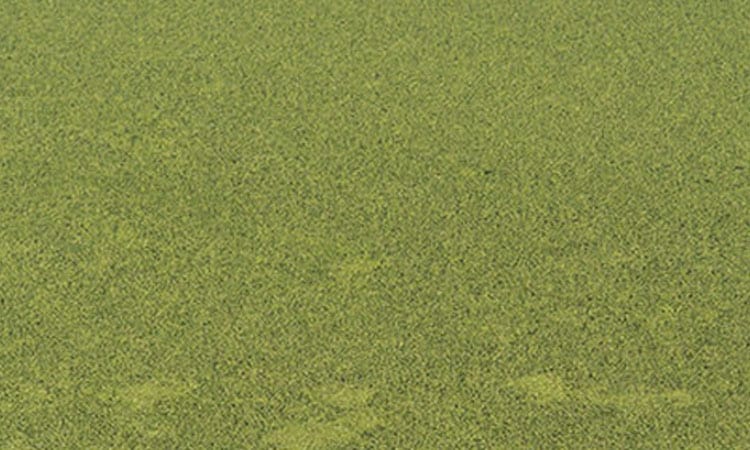Duckweed Lemna spp. is identified by a pale green or dirty brown layer of algae-like plants covering a body of stagnant or slow moving water
- English Name: Duckweed
- Latin Name: Lemna spp.
- Life Cycle: Perennial
- Propagate : Mostly buds, also by seeds.
- States Affected: Duckweed Lemna spp is a native weed found across the United States
- Control Methods: Control Duckweed Lemna spp with nets, Rakes,
- Removal Tools: Deskuzzer, Lake Bottom Blanket
What Are Lake Duckweeds
First, Duckweeds are widely considered nuisance weeds, yet they are some of the most beneficial weeds ever. They love nitrogen and phosphate, two chemicals common in sewage, animal waste and some industrial pollutants. Plus, they are edible. Ducks of course love this type of weed so much it was named after them. But virtually all water animals eat the weed as do cattle, sheep, chicken, pigs and any other animal that takes any type of animal feed. In parts of Asia, even people eat the weed.
Second, Duckweeds are the tiniest flowering plants, yet when they get going, grow so fast that they can double their area of coverage within 36 hours. In fact you never quite see a duckweed plant; you see a huge “green blanket” of green covering a body of stagnant or slow moving water.
And that’s just the big picture. The details are stranger. For instance, individual Duckweed plants are so tiny they are usually mistaken for algae. The “leaf” of your typical duckweed is between 2 and 20mm in diameter, just about the size of a thumbnail. Yet, although Duckweeds really are plants, they have no leaves. Instead, they have green, oval-shaped, leaf-like parts often called fronds but which, says botanists, are really neither leaves nor fronds. They are thallus like a complete plant within a leaf that float on the surface of the water, above stringy rootless stems which grab at each other to form the green blanket.
What Is Lemna Duckweed
The Lemna Duckweed – scientific name Lemna Spp – is commonly found in lakes, marshes, ponds and streams across the US. It is usually pale green and grows both in open sunlight and shaded settings. It prefers clear water but will handle brackish water. The weed prefers nutrient rich, stagnant or slow moving water, where there is no heavy wind or strong water currents and can be found in every climate except in the permafrost of the poles and the open deserts.
The Lemna is a perennial plant that survives the seasons by producing buds in winter that sink to the bottom of the pond to wait for the next season. They are, curiously, flowering plants, with the flowers and fruits so small they are invisible to the naked eye. But they do not flower often or regularly, instead relying on the buds called turions that form at the base of the leaves to reproduce. Each “leaf” can form buds several times in its life.
Dealing with Excessive Lemna Duckweed and How to Control this Lake Weed
Lemna Duckweed is, as noted earlier, one of the really good weeds. It is food to most water animals and birds, cleans and is a premium animal feed source. There are, in fact, projects in various parts of the world aiming to turn Duckweed into a large scale farming crop for animal and fish feed. On average, Lemna weed requires 10% of the area taken by Soybeans and 20% of a corn field to produce the same amount of animal feed nutrients.
But even a good weed like Lemna can’t help being a weed. Because of its stupendous growth rate, it easily takes over a water body, and as it matures, the decaying plants turn the water dirty brown – which explains why most people know the weed as a pollutant of water rather than the beneficial plant it is.
When that happens, the typical removal method is to drag the plant out of the water using rakes or nets. The Deskuzzer, one of our weed control products, is particularly suited for the task because of its long reach and ability to cover a wide surface area quickly. It is a 5 foot wide floating seine with sturdy abrasion, ultra tough screen, and a 24 foot pull line.
If, however the infested water area is large, a more efficient method is the Lake Bottom Blanket. This is our lead weed control product made of formulated polythene sheet that is lighter than water and is about 10 feet wide. It is packaged in a roll so it can be as long as required. The Lake Bottom Blanket works by pinning down the weed while remaining suspended off the water bed to allow fish and other water inhabitants to swim freely below and above the Blanket. The weed is totally blocked from accessing sunlight.
The Lake Bottom Blanket has already been used in over 400 lakes in over 29 states, in each case returning a 100% kill rate of lake weeds. It is approved for use by the DNRs and DEPs of California, Nevada, New York, Connecticut, Massachusetts and Washington.

